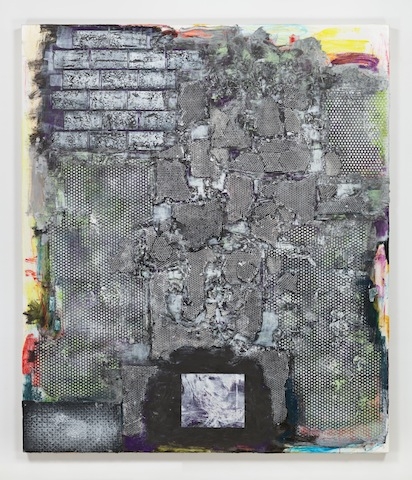Hauser & Wirth, London, 27 September – 18 November
Jack Whitten’s work was one of the highlights of Tate Modern’s Soul of a Nation, a show which did an excellent job of introducing a number of African-American artists who are hardly known in Britain. However, the context in which his work was placed – a room exclusively containing abstract paintings and sculptures – also pointed to one of the exhibition’s most problematic aspects, namely its attempt to link virtually every work or style, even the most purely formalist, to matters of black identity. Of course, numerous artists actively strived to develop what they saw as a specifically black aesthetic. But does that mean all art by African-Americans, to qualify as ‘authentic’, necessarily has to represent the black experience? Can’t art by African-Americans ever just be universal?
What’s fascinating is that these are exactly the sorts of questions Whitten’s paintings themselves seem to wrestle with, in the 78-year old artist’s first solo show in London. Ostensibly, all the works are abstract. Geometric shapes often feature – as in Annabelle II (1984), a circular canvas whose creamy, thickly impastoed top layer is faintly incised with quadrilaterals and deeply gouged with crisp, concentric circles to reveal richer colours beneath. Also, there’s a strong focus on ideas of process, on paintings revealing the methods of their own manufacture – most notably in the four small, square works from Whitten’s DNA series (1979), where a painted, abstract ground has been raked or combed (Whitten constructed special, multi-pronged raking tools) to create a gridded pattern, a different shimmering, eye-watering, weavelike effect in each case. They’re unique pieces, in that sense – but at the same time they’re like a kind of system or code, products of a process that’s impersonal, universally applicable, indifferent to identity.
DNA, that most fundamental of codes, was the metaphor Whitten chose for that series’ title. But he also likened his work to photography, in the way that his raking processes could be seen as fixing or developing an image. He’s quoted in the show’s catalogue as describing his art as a way of photographing his thoughts – the idea being one of capturing something personal and subjective, externalising it, making it objective. Soon, he began to experiment with another object-related technique in his Site paintings (1986), using moulds he took from the urban environment – metal grilles, manhole covers, tire treads – to cast directly into acrylic paint, the patterned sections forming a sort of topographical collage.
There’s no way of chasing objective truths, these works seem to declare
These two strands come together in what are the most impressive works in the show, the large paintings dedicated to various friends and luminaries. Ode to Andy: For Andy Warhol (1986) consists of tessellated, ash-grey casts of chicken wire, bubble wrap and brickwork, surrounded by frantic scrubs and drizzles of bright paint. Willi Meets The Keeper (For Willi Smith) (1987) is even more madly mesmerising, the swirling, embossed fragments buckling into knotted ridges and lesions, while skeins of colour dimple and pucker. The paintings aren’t portraits, they don’t represent anything – but nor are they not portraits, according to Whitten’s philosophy: rather they’re depictions, like photographs, of his thoughts or feelings, psychic impressions of a subject. And it’s here that the theme of race becomes manifest – not merely because various works are dedicated to prominent African-Americans; but because of the variegated, skinlike textures the paint makes: wrinkles, keloids, charred-looking wounds. The resonances are oppressive, unavoidable – albeit most obvious in the drenched black surface of Black Monolith I, A Tribute to James Baldwin (1988). There’s no way of chasing objective truths, these works seem to declare, without ending up back at that most abiding, divisive truth of all, the fact of racial identity in America.
From the December 2017 issue of ArtReview
